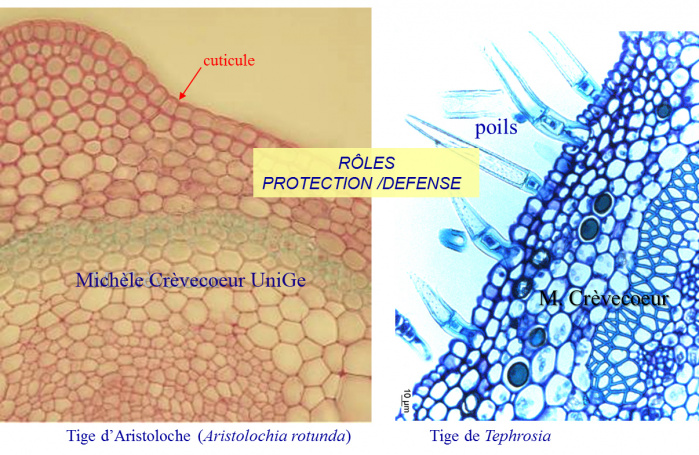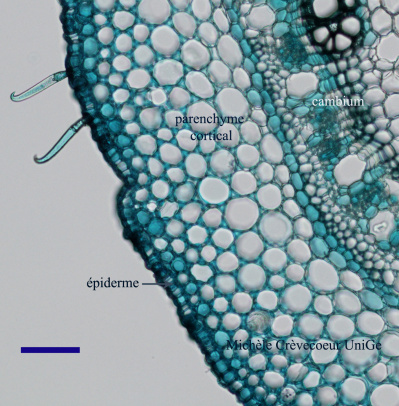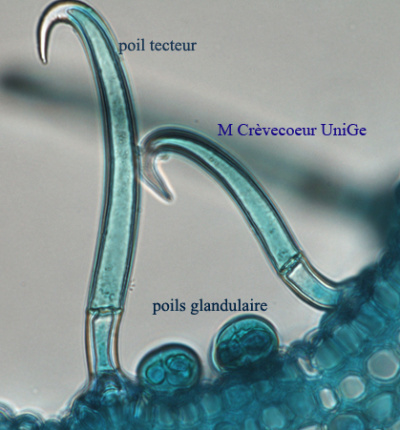Protection (dermal) tissues
They are the most external tiisues of the plant organs and are usually in contact with the environment. In aerial vegetative organs with primary growth (stems, petioles, leaves) the protection tissue is called epidermis. It consists in a monolayer of tightly joined cells with no intercellular spaces. It plays different roles: protection against radiations, water loss by evapotranspiration, pathogens, and microorganisms. The wall in contact with the environment is characterized by a cuticle (absent on stomata, specialized cells of epidermis in aerial organs) whose thickness varies depending on the environment. Cuticle consists in a continuous layer of cutin, a lipidic permeable substance synthetized and secreted by the cell and deposited outside the wall. Cells of epidermis do not content chloroplasts except stomata.
Some cells of the epidermis are specialized : trichomes. There are a multitude of trichome forms. They may have different functions : defense, contact with the external medium or secretion of substances; stomata are essential for gas exchanges (O2, CO2, water vapor). Scanning electron microscopy is appropriated to visualize them. Beneath epidermis in some leaves, we can find a hypodermis composed of one or several layers of cells without chloroplasts.
Protection tissues in roots and other underground organs do not have a cuticle or stomata. In roots the protection tissue in the hairs region is called rhizodermis (see sections through Iris, sunflower & Zea mays roots.
On this page you will find below micrographs that illustrate epidermis and trichomes of this tissue in young stems.
(1) Epidermis in cross sections through young dicotyledon stems

(2) Trichomes at the surface of epidermis in a cross sectioned stem of Phaseolus.
Fresh sections have been made using a vibratome in a young stem and stained with methyl green. They were directly deposited on a slide, covered with a coverslip, and observed with a light microscope. Two kinds of trichomes are observed, glandular and protective.

